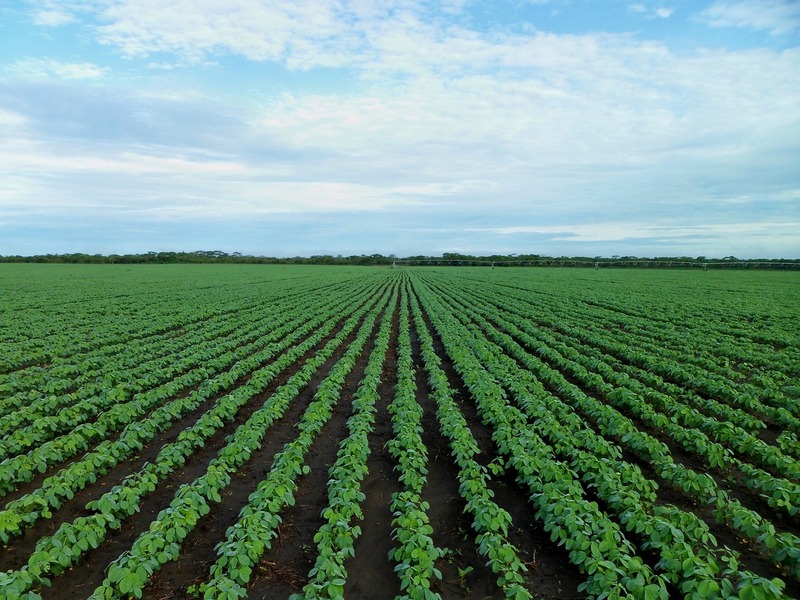
- Historically, USDA's October round of monthly supply and demand guesses were largely overlooked by an industry more interested in the ongoing harvest.
- Things changed in 2005 with the passage of the US Energy Policy Act and subsequent increase in position limits in agricultural commodities, including King Corn.
- Since 2005, USDA's October reports have shown wild revisions to acres planted the previous spring, with the expect market Chaos following close behind.

Here we are on October 11. Many of you have likely broken out your fall sweaters for your daily constitutional that now includes the crunching of fallen leaves beneath the feet. Some of you are likely indulging in the taste of the season, enjoying something pumpkin spiced, though for the life of me I’ve never understood the allure of that particular flavor. As for those in North American agriculture, the 2023 fall harvest is in high gear with NASS’ latest weekly nonsense estimating US corn (ZCPAUS.CM) harvest to be 33% complete while 30% of US soybeans (ZSPAUS.CM) have been taken out of the field[i]. And with USDA’s October round of monthly supply and demand guesses set for release Thursday, ag media (both regular and social) is overflowing with debates on what US production of corn and soybeans will be.
What do I think? I could not care less, but you knew that before the question was even asked. I don’t need make-believe government numbers to tell me what supply and demand is for any market, as the information is in front of us every hour of every day, of every week, of every month, of every year, and so on. But the vast majority aren’t interested in reality. They’d rather play the monthly Keno game: Sit in their office/at the bar/wherever and wait for USDA (aka The House) to “randomly”[ii] draw its numbers and announce if they won. What a great way to make a living. But I digress.
A long-time friend who also happens to be a top-notch commodity reporter asked my thoughts on what to look for in the October numbers. Historically, production does tend to take center stage this month, but not because USDA continues to clear up the question on yield. Rather it has to do with large changes to planted acres[iii]. Yes, those acres various branches of USDA have had the numbers for since this past spring.
I went back through USDA’s October archives to illustrate this point. Through 2005, there usually wasn’t much change with some adjustments occasionally made to US soybean planted acres and seldom anything done to US corn planted area. But then a couple interesting things happened that changed the nature of October reports:
- In late 2005 the US Congress passed its Energy Policy Act of 2005, igniting the demand market in corn[iv].
- At about this same time, position limits at the CME were changed to allow for more noncommercial (fund, investment, etc.) trade in agricultural markets. If I recall, these limits doubled for corn, then were increased again down the road.
Knowing the CME thrives on trade volume, one look at what has happened since 2005 certainly highlights USDA has been happy to help during what was historically a dull time of year. In October 2006, US planted acres of corn were reduced by 800,000 while soybeans were increased by 700,000. Similar adjustments were made in 2007, before all hell broke loose in 2008. In its initial October report USDA decrease US corn planted area from September’s 87.9 million acres (ma) to 86.9 ma, while increasing soybeans from 74.8 ma to 77.0 ma. But that wasn’t quite good enough, so later in the month USDA released a revised October report that took another 1.0 ma off corn, dropping it to 85.9 ma, AND took 1.1 ma back from soybeans.
Yes, that was a lot of fun.
Since 2008 both crops have seen their share of changes, with the largest for corn being a 2.1 ma reduction in 2013[v]. The soybean numbers have been much more volatile since 2008, ranging from an increase of 1.1 ma (2012) to a decrease of 1.2 ma (2010).
But something strange has happened the last two Octobers. A look at the far-right hand side of the chart shows USDA has left its September guesses alone in both 2021 and 2022. This raises a couple interesting possibilities heading in the 2023 edition:
- Do we see a third consecutive year of no changes, bringing to mind an application of the Benjamin Franklin Fish Similarity[vi]?
- Or has the spring been coiled and ready to be unleashed when the October 2023 envelope is opened?
As always, it won’t be informative, but it could certainly be entertaining.
Like Keno on steroids.
[i] Just to highlight how ridiculous these weekly updates are, with harvest rolling along NASS continues to estimate crop conditions as well. Why? Because there’s a schedule to keep. Ah bureaucracy.
[ii] I’ve never believed the Keno numbers in Las Vegas are ‘random’, not after seeing the lost souls throwing down their last dollars in hopes of making enough to get home.
[iii] It should be noted USDA made a significant adjustment to corn planted area in its September round of silliness, increasing US planted acres by 800,000.
[iv] A demand market is defined as a change in demand, in this case ethanol, creating a long-term change in price expectations. This differs from the more common supply market, where adverse weather tightens supplies and causes a short-term change in price.
[v] This was actually released in the November report given the government had been shut down during October and no report was release. That was a great time.
[vi] The Benjamin Franklin Fish Similarity tells us, “Like guests and fish, markets start to stink after three days/weeks/months/years (whatever time frame is being studied) of moving against the trend”.
On the date of publication, Darin Newsom did not have (either directly or indirectly) positions in any of the securities mentioned in this article. All information and data in this article is solely for informational purposes. For more information please view the Barchart Disclosure Policy here.






